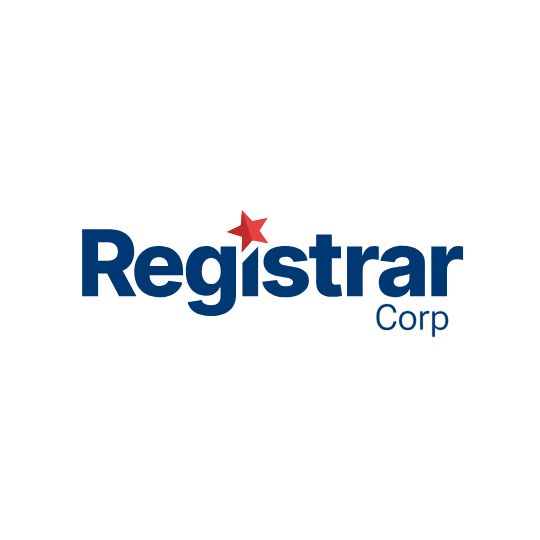Confidentiality, regulatory compliance, and strategic market access are fundamental to pharmaceutical success. Across the globe, master file systems help protect proprietary information while ensuring regulatory agencies have access to critical manufacturing, quality, and safety data. For companies expanding internationally, understanding the variations between these systems is crucial. While the U.S. Drug Master File (DMF) is a familiar foundation, markets like Europe, China, Japan, and Canada each maintain their own frameworks with unique requirements.
This guide provides a detailed yet accessible overview of global master file systems, using the FDA’s DMF as a central reference point. We’ll explore how each system compares, helping manufacturers, regulatory affairs teams, and quality leaders prepare for global submissions with confidence.
Understanding the US Drug Master File (DMF)
The U.S. Drug Master File (DMF) is a voluntary submission to the FDA that allows companies to provide confidential, detailed information about facilities, manufacturing processes, packaging, and components related to human drug products. Rather than requiring sponsors to reveal proprietary information directly within their product applications, the DMF permits referencing through a Letter of Authorization (LOA).
DMFs are primarily reviewed when cited by an Investigational New Drug (IND), New Drug Application (NDA), Abbreviated New Drug Application (ANDA), or Biologics License Application (BLA). They are not independently “approved” but are evaluated as part of the associated application review process.
Key Features
- Types: DMFs are classified into five types: Type II (Drug Substances or Drug Products), Type III (Packaging Materials), Type IV (Excipients, Colorants, Flavors), and Type V (FDA-accepted Reference Information). Type I (Facilities and Personnel) has been discontinued.
- Format: eCTD (Electronic Common Technical Document) format is mandatory.
- Maintenance: Requires annual reports and timely submission of amendments.
- Confidentiality: The FDA maintains the confidentiality of the DMF, even from the referencing applicant.
Active Substance Master File (ASMF) – Europe and UK
In the European Union and the United Kingdom, the Active Substance Master File (ASMF) serves a similar purpose to the U.S. DMF. It allows manufacturers to submit confidential information about active pharmaceutical ingredients (APIs) separately from the Marketing Authorization Application (MAA).
A distinguishing feature of the ASMF system is its two-part structure:
- Applicant’s Part (AP): Contains information necessary for the applicant (e.g., finished product manufacturer). Shared with the applicant.
- Restricted Part (RP): Contains proprietary information submitted solely for regulatory review and not shared with the applicant.
Key Differences vs DMF
- ASMFs are only reviewed in connection with a marketing authorization application, not independently.
- Two-part confidentiality structure separates what is shared with applicants from what remains confidential.
- Submitted to national competent authorities, including agencies coordinated through the Heads of Medicines Agencies (HMA) network—not only EMA or MHRA.
- No centralized approval; each submission is reviewed during MAA review.
- Unlike the U.S. FDA, which considers the entire DMF confidential, Europe mandates this split disclosure format.
Certificate of Suitability (CEP) – EDQM/Europe
In addition to the ASMF pathway, Europe offers an alternative certification route through the Certificate of Suitability (CEP), aimed at simplifying submissions for standardized APIs.
What Is a CEP?
A Certificate of Suitability (CEP) issued by the European Directorate for the Quality of Medicines (EDQM) certifies that an active substance complies with a specific European Pharmacopoeia monograph. A CEP can eliminate the need for a full ASMF in certain cases, simplifying regulatory submissions across Europe.
Key Differences vs DMF
- Confirms API quality based on pharmacopoeial standards rather than a company-specific dossier.
- Streamlines submission by allowing applicants to submit the CEP instead of full API data.
- Issued by EDQM, distinct from EMA.
- Focused narrowly on quality compliance rather than broader proprietary information.
Chinese Drug Master File (NMPA Filing)
Following regulatory reforms in 2019, China’s National Medical Products Administration (NMPA) established a centralized master file system for APIs, excipients, and packaging materials. Companies must submit their technical data for pre-registration and obtain acceptance before these materials can be referenced in drug product applications.
Key Differences vs DMF
- Pre-Registration Requirement: Must be filed and accepted prior to product application referencing.
- Review Process: Involves technical verification as a standalone step.
- Transparency: Some public registration data; confidentiality practices differ.
- Product-Specific: Requirements vary for chemical drugs, biologics, and traditional Chinese medicines (TCM).
Japanese DMF (J-DMF)
The Japanese Drug Master File (J-DMF) system, overseen by the Pharmaceuticals and Medical Devices Agency (PMDA), allows manufacturers to protect confidential information about APIs, intermediates, and materials used in drug products.
Key Differences vs DMF
- Language Requirement: Submissions must be in Japanese.
- Scope: Can cover intermediates and raw materials, not just final APIs.
- Review Trigger: Reviewed only when referenced by a product application.
- Maintenance: Requires proactive notification of significant changes.
- Residency Requirement: Foreign manufacturers must use a local agent to file.
Canadian Drug Master File (Health Canada)
Canada’s master file system, regulated by Health Canada, closely parallels—but also diverges from—the U.S. DMF framework.
What Is a Canadian DMF?
Canada’s system includes:
- Type I – Administrative Information
- Type II – Drug Substance
- Type III – Drug Product
- Type IV – Container Closure System
- Type V – Facilities and Equipment
Note: Health Canada does not use the term “ISMF” officially, and these categories reflect the formal guidance.
Key Differences vs DMF
- Submissions must be in eCTD format with no paper exceptions.
- Review timelines and completeness assessments are defined by clear Health Canada procedures.
- Master files are submitted through the FDA’s ESG system under mutual recognition protocols, though this detail may not be essential for most applicants.
Comparing Global Drug Master File Systems: Key Points
Across the world, master file systems serve a similar purpose—protecting proprietary information while enabling regulatory review—but each region’s system has distinct requirements and processes.
- U.S. DMF: Single, confidential file reviewed when referenced. No split between applicant/restricted content.
- EU/UK ASMF: Two-part structure (Applicant’s Part and Restricted Part). The Restricted Part is never shared with applicants. Submitted through national agencies across the HMA network, not just EMA or MHRA.
- CEP (EDQM): Certifies conformity with Ph. Eur. monographs; eliminates the need for an ASMF in many cases.
- China (NMPA): Requires pre-registration and independent technical review of master files.
- Japan (J-DMF): Japanese-language submissions, local agent required, reviewed only when referenced.
- Canada (Health Canada): Submitted via FDA ESG, with formal master file categories and mandatory eCTD formatting.
While each region maintains its own master file framework, global harmonization efforts such as the International Council for Harmonisation (ICH) influence aspects of technical documentation. However, master file systems themselves remain distinct by jurisdiction, requiring careful local compliance.
Building a Successful Global Regulatory Strategy
Master files are essential tools for protecting intellectual property and facilitating regulatory approvals—but they are not interchangeable across markets. Whether preparing a DMF for the FDA, an ASMF for Europe, or an NMPA filing for China, pharmaceutical companies must align their regulatory strategies with each region’s unique expectations.
Understanding these differences is the first step toward a seamless global expansion. Future resources will provide detailed guides for specific master file systems, including practical steps for ASMF submissions, NMPA registrations, and CEP applications, empowering manufacturers to navigate international drug development with precision and confidence.









